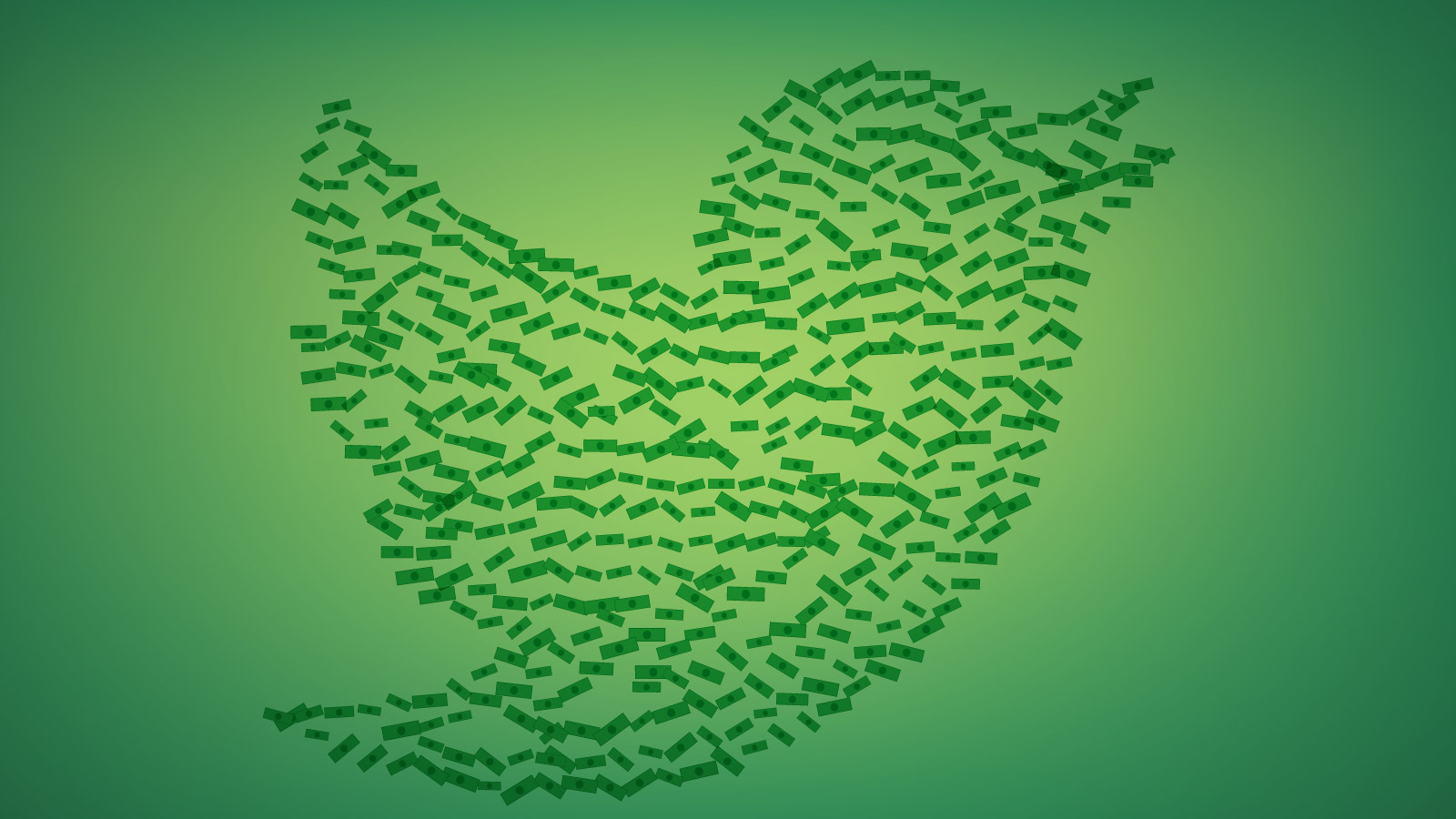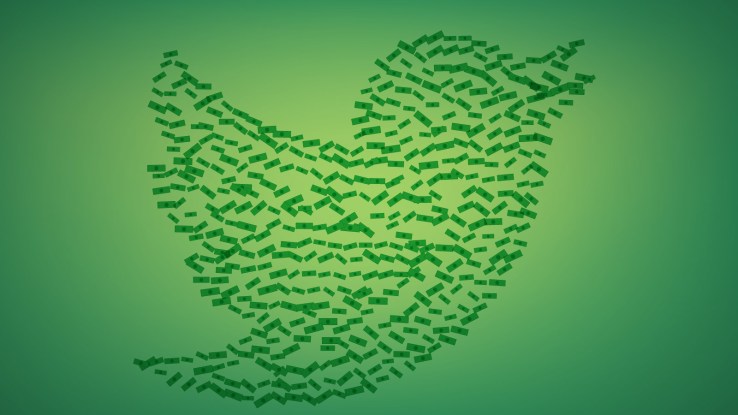How to make Twitter profitable


For better and sometimes worse, Twitter is one of the most powerful forces onthe planet. Twitter has arguably played a critical role in at least two of the defining political upheavals of our era: The Arab Spring and the election of a political outsider, Donald Trump, as president of the United States.
Every day, Twitter contributes to the political debate, the sharing of ideas and the widespread dissemination, via links, of news articles and the otherwise obscure findings of academics and nonprofit studies. And, each day, this activity on Twitter contributes to meaningful, ongoing political debate acrosssocieties and across the political spectrum.
Of course, Twitter also is filled with conversations related to our everyday lives. Sometimes they are meaningful, sometimes they are not. But, for many people, Twitter plays a central role in how they connect with friends and family. Like every social platform, there is noise filled with high-minded discussions as well as seemingly mundane conversations.
What is perhaps unique about Twitter is the dichotomy between this valuable role in empowering and connecting people and its ongoing lack of profitability. With restructuring charges, Twitter’s net loss in the fourth quarter of 2016 was $167 million, or 23 cents a share, and less than 1 percent year-over-year revenue growth. For 2017, the company has announced plans to achieve profitability, largely through staff cuts. Skepticism that profitability will be achieved is high.
At the same time, many believe these layoffs mortgage the company’s future by cutting the sales force that generates revenues and the R&D staff that makes the service more appealing over the long term. In 2009, after writing a book arguing that extreme and growing economic inequality would lead to societal dangers, for our politics and the health of our economy, I became an active Twitter user. Over the years, my activity has waxed and waned, but Twitter remains the central mechanism I use to share my ideas.
At the same time, as an internet marketer, I have developed Twitter campaigns for myself and commercial clients. The net result is that I have a strong understanding of how Twitter can build awareness and influence in the political, nonprofit and commercial realm. Most important, my belief in the fundamental value of the service, and the benefits it brings the world, is very high.
A simple proposal
Twitter, like all social media, has evolved dramatically since its founding. What the founders fully envisioned we cannot know. My guess is Twitter’s founders never envisioned corporate accounts with millions of followers. I believe they set out to create a service that would connect people with each other.
Nonetheless, there is one thing we do know: Today, many business entities have millions of followers and communicate with these followers using Twitter as a tool to promote their products and services. This is free advertising, no ifs, ands or buts.
What is perhaps unique about Twitter is the dichotomy between this valuable role in empowering and connecting people and its ongoing lack of profitability.
So, here’s a proposal to radically change the economics of Twitter: Charge businesses that exceed a set number of followers (perhaps 250,000) a monthly fee based on their total number of followers. To provide a sense of scale, here are the follower counts for a cross-section of well-known brands:
- @TeslaMotors 1.4 million
- @Verizon 1.7 million
- @Pepsi 3.1 million
- @CocaCola 3.4 million
- @McDonalds 3.4 million
- @Intel 4.7 million
- @Marvel 4.9 million
- @GoogleChrome 6.1million
- @SamsungMobile 12.1 million
- @Google 17.6 million
I suspect most of these businesses spend large sums (with in-house personnel or outside agencies) planning and developing their Twitter activities a clear form of advertising that provides value, with no portion going to Twitter. Why would it be wrong for Twitter to capture, through fees, a piece of the economic value its service brings these companies?
To assess the potential magnitude this change might have on Twitter’s bottomline, let’s take a hypothetical example: Suppose Twitter collected an average annual fee of $600,000 from 2,000 businesses. This would represent increased annual revenues of $1.2 billion. Of course, there would be costs associated with implementing this policy, but the upside is enormous: Most of this $1.2 billion increase in revenues would drop straight to the bottom line.
The reality of value delivered
I don’t claim to know what the right fee is, or how this fee should increase by the number of followers involved. But, let’s ask the most important question: Would a major brand leave Twitter if a new fee of $50,000 per month were imposed? Companies with millions of followers derive far greater economic value than this monthly sum. Indeed, I strongly suspect many companies spend far more simply staffing their Twitter-related social media campaigns and working with outside agencies. Of course, this would be a cost, which adds to these existing expenses. But, once again, I strongly suspect tweets bring these companies far higher returns than this proposed monthly fee plus any social media management expenses. I also believe these companies know it.
Yes, I think its legal
I have discussed this idea with a limited number of colleagues. Inevitably, they ask whether charges of this type, levied solely on companies with large follower bases, might represent some form of illegal price discrimination. My understanding is that this suggested revenue idea is entirely lawful.
Here’s how it can be done: First, let’s take a worst case example that assumes, under the applicable law, corporations that are Twitter users have the same rights as people. Then, these charges could be defined as advertising fees on any Twitter user that has more than 250,000 followers. (Remember, Twitter allows users to block followers, so no one forces a person or corporation to move from the free classification to the new, higher-follower paid classification).
Second, discounts for different categories of advertisers (which can be definedby purpose or commercial segment) are, I believe, legal. As a result, individuals and entities with a non-commercial purpose, such as politicians, journalists, academics, news entities, governmental entities and all nonprofits could be exempted from these advertising fees. They would effectively receive a 100 percent discount. Indeed, significant discounts for nonprofits and educational institutions are commonplace across the spectrum of Internet services.
Why would it be wrong for Twitter to capture, through fees, a piece of the economic value its service brings these companies?
Finally, the group that may present the most significant issue for this proposalare celebrities: movie stars, athletes, authors and musicians. One again, I believe the issue of category discounts resolves this concern. Twitter could decide not to charge these people who for many Twitter users add value to the community or to charge a lower fee (a specific discount for this category).
Now, let’s look at the alternative scenario, and assume corporations do not have the same rights as people. Twitter can freely exempt all individuals from charges. Here, Twitter could require corporations to pay advertising fees based on their volume of followers, with fees starting when a firm has morethan 250,000 followers (or whatever number is deemed appropriate). In this scenario, discounts would apply, as frequently happens now online and offline, to entities that have a political, informational or non-commercial purpose (i.e. news entities, political entities, governmental entities and nonprofits). The one difference is that on Twitter these discounts would total a full 100 percent.
Adding value for corporate users
Next, Twitter could take a small piece of the large revenue increase discussed here and create services that add additional value for these paying, large corporate users. I can imagine a wide range of mechanisms that Twitter, with access to its firehose of data, could deploy to increase the effectiveness of large businesses actively using its service.
New services may be valuable, but are not necessary
In recent years, Twitter has based its path to profitability on service enhancements designed to increase user engagement and growth, and on a transformation into a media consumption platform. Twitters recent loss to Amazon of its marquee deal to stream NFL Thursday night games casts an additional shadow on this often-questioned media-related strategy.
As an active Twitter user, I also can imagine a wide range of service enhancements that would increase my engagement. For example, I simply can’t imagine why Twitter is not the premier source for an automated, real-time feed of the personalized news topics that meet my interests. The existing News, Trends and #search features fall short of satisfying this craving. However, issues associated with creating more engaging features are outside the scope of this article.
Nonetheless, new service features, while desirable, are not needed for Twitter toachieve far higher profitability: A radical shift in its revenue model will enable Twitter to achieve the profitability it merits. Twitters existing user base already delivers enormous marketing and advertising value to businesses. To date, Twitter, in contrast to other media, has not sought to capture an appropriate share of the value its service creates for businesses benefiting from the use of its platform.
Jack, give me a call
Jack Dorsey, we have never met, and you probably resent people like me suggesting ideas that no doubt you have considered and rejected. But, let’s face it: Your business is not improving. You are at a crossroads: You can be Yahoo (without a buyer) or a reimagined business, with Facebook-like potential. I suggest you choose the latter. Let’s talk.
Read more: https://techcrunch.com/2017/04/22/how-to-make-twitter-profitable/